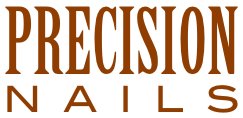Article Published in Stylist Magazine, April 2010
As beauty professionals and business owners, it’s possible to make better choices, choices that are more efficient, more economical and more “green.” Many choices are presented to us, and others we discover for ourselves. This has been my experience with waterless spa pedicures. Five years after its introduction, the waterless spa pedicure continues to be the most popular service in my salon and the most popular class I teach at beauty shows. Whether working with clients or teaching classes, I'm often asked why I chose to go waterless. I must admit that being green was the least of my considerations, but it has since become one of the most important benefits of this innovative pedicure procedure. As ridiculous as it sounds, that choice completely changed the way I do business, and gave me a new perspective on what it means to be green.
Being green requires more than recycling plastic containers. While certainly worthwhile, recycling alone does not go far enough to improve the environment. Given our creativity and resourcefulness, we can do so much more. That being said, being green represents a significant challenge to think differently about our own salon environment. Instead of merely following tradition, we should question our salon practices and research our options. We need to reevaluate everything we do, from purchasing decisions to service offerings to marketing.
Greening our salons begins with a commitment to protect the health and safety of our clients, ourselves as service providers and the environment we all share. At a minimum, we must understand and follow the laws that govern both the beauty industry (your state board) and the workplace (OSHA). Knowing this critical information helps us stay in compliance and reduces our liability.
Beyond our technical skills, our expertise as beauty professionals depends upon our knowledge of product chemistry, including the proper use, storage and disposal of our salon products. Marketing “organic,” “natural” or “non-toxic” products and services as safer has become commonplace, but unless scientific research supports those conclusions, such claims are unfounded. Our clients expect us to be informed and truthful. Whether done intentionally or through ignorance, misleading your clients about the safety and quality of products and services compromises your professional credibility.
We want what’s best for our clients, and our choices should reflect that. In early 2005, I chose to replace an expensive whirlpool footspa with a comfortable leather recliner and introduced a new service, the waterless spa pedicure. By eliminating the water, I created a more efficient pedicure that's much safer for clients and better for the environment. As admirable as that sounds, especially now that more salons consider themselves "green," that's not why I did it. Saving the planet wasn't nearly as important as saving myself . . . from the hassles of owning and using a footspa. Despite its beautiful looks and "pipe-less technology," my footspa never worked consistently; moreover, it barely circulated the water and required too much time and effort to clean. I soon realized that my time and efforts would be better spent working on clients, rather than cleaning equipment. Besides, no equipment can replace me as the the service provider.
I also realized that, contrary to what I learned in beauty school and demonstrated for the manicurist licensing exam, California's Board of Barbering and Cosmetology does not require that feet be soaked and/or cleaned before a pedicure service. So when I clean my client's feet during a waterless spa pedicure, I am exceeding what the state board requires. At the same time, I can avoid California's strict regulations for disinfecting footspas, or any other container that holds water.
Why waterless? Eliminating the water eliminates:
• the expense of a footspa, including maintenance and parts;
• the space required to install it;
• the expense of plumbing, including labor and permits;
• 12- 15 gallons of water each pedicure;
• the expense of water and sewage fees;
• the risks associated with water-borne bacteria;
• the time to clean a footspa, or any other container;
• the labor involved in cleaning;
• the expense and disposal of disinfection products; and
• the need for a pedicure-equipment cleaning log.
To quantify the water savings, we provide about 3500 nail services a year and use less than 1500 gallons of water. In the last 5 years, our salon has saved more than 75,000 gallons of water that otherwise would have been wasted. The response to this service has been overwhelmingly positive, even earning the praise of California American Water which described Precision Nails as a “fine example of a water-wise business.” Considering all the benefits of waterless pedicures, I can't imagine doing it any other way, but the choice is yours.
Jaime Schrabeck, Ph.D. owns Precision Nails, an exclusive nails-only salon in Carmel, California. She can be reached at info@precisionnails.com.
By Jaime Schrabeck, Ph.D.
Welcome to the Precision Nails Blog
As a salon owner and licensed manicurist, my perspective on the nail industry could not be more practical. While some may be offended by the opinions expressed, please understand that I want to share information and stimulate discussion. Whether you want your nails done or do nails professionally, I hope you find this blog both useful and interesting.
Jaime Schrabeck, Ph.D.
Materials on this website may not be reproduced, redistributed, transmitted, copied, cached, or otherwise used, without prior written consent of Jaime Schrabeck. To request consent, contact Jaime at consulting@precisionnails.com.
Jaime Schrabeck, Ph.D.
Monday, January 17, 2011
Subscribe to:
Post Comments (Atom)





No comments:
Post a Comment